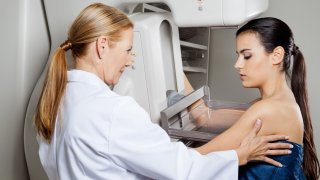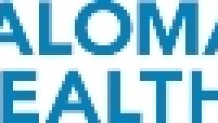

The following content has been created in collaboration with Palomar Health. It does not reflect the work or opinions of NBC San Diego’s editorial staff. Click here to learn more about Palomar Health.
Today, when a patient is diagnosed with breast cancer at an early stage, their chances of survival are often higher. Advances in medicine and screenings have not only improved early detection, but also paved the way for more effective treatment options. In other words, we’ve come a long way since cancer was treated with opium and castor oil, but the medical community remains tasked with awareness and education in order to reduce risk and improve breast cancer survival rates as much as possible.
Once upon a time
Get San Diego local news, weather forecasts, sports and lifestyle stories to your inbox. Sign up for NBC San Diego newsletters.
Because of the way breast cancer manifests in physical tumors, the disease has been around for longer than any other type of cancer, dating back to the ancient Egyptians in 1500 BCA. Until 1757 most physicians and surgeons considered a cancer patient incurable after a diagnosis had been made, a belief that to some extent persists today, fueling people’s fear of the disease.
As treatments began to emerge, many doctors performed radical surgery to control the disease locally. This approach eventually evolved into the breast-conserving surgery we now know as lumpectomy. However, treating breast cancer as a local disease does not address the fact that the cancerous cells may have spread to the rest of the body, depending on how advanced the disease is.
Breast cancer today
One of the most critical life-saving advances in breast cancer is the mammography, which uses x-rays to see inside the breast and detect any potential abnormalities or tumors. Early detection is crucial in most cancers, and breast cancer is no exception—medical professionals encourage women to start screening at age 40, or even earlier for those with risk factors such as a family history of breast cancer or extreme radiation exposure.
In addition to detection and prevention, medical and technological advances have allowed for a wide array of treatment options, including surgery, radiation, chemotherapy, hormone therapy and targeted therapy. Early detection also plays a role here, as it allows for better and more successful options. Sometimes, depending on the patient’s condition and the approach of their medical team, they may have several options for which treatment to pursue, allowing them to take some control of their health in an otherwise destabilizing moment.
Some things never change
While medicine has certainly advanced over centuries and continues to do so today, some old myths still prevail. Some of the most pervasive far-flung myths include the following:
- Wearing a bra can cause breast cancer: Many claim that the underwire can restrict the flow of lymph fluid out the breast and build up toxic substances in the tissue. However, there is no evidence that has proven this to be true.
- You’ll feel a lump if you have breast cancer: While this is often the case, it’s not always true, especially when the cancer first develops. However, many people will believe this and skip their mammograms. By the time they feel a lump in their breast, it may already be too late.
- Breast implants increase your risk: While no evidence has been found to prove this, additional x-rays may be needed to fully examine the breast tissue, since standard mammograms may not always detect abnormalities as effectively for women with implants.
- Mammograms can cause breast cancer to spread faster: Again, there is no evidence to support this claim. Mammograms use a low dose of radiation and compression and are critical in detecting cancer early on.
Know your risk
Breast cancer symptoms range across patients, but the most common ones include swelling, changes to skin texture, lumps in the breast or around the collarbone or underarm, and breast or nipple pain.
Certain risk factors also increase a woman’s chance of developing breast cancer, primarily increasing age, personal or family history of breast conditions or cancer, radiation exposure, obesity, and overexposure to estrogen and progesterone throughout one’s life.
To decrease breast cancer risk, doctors recommend living an objectively healthy life: exercising most days of the week, maintaining a healthy weight, and following a healthy, balanced diet. However, a healthy lifestyle is only the first step, which is why it’s so important to schedule regular mammograms and self-exam once a month.
Don’t take your health for granted, take action instead. Experts at Palomar Health are readily waiting to assist you if you still have questions regarding breast cancer detection, prevention, or risk factors. Click here to learn more about Palomar Health.

